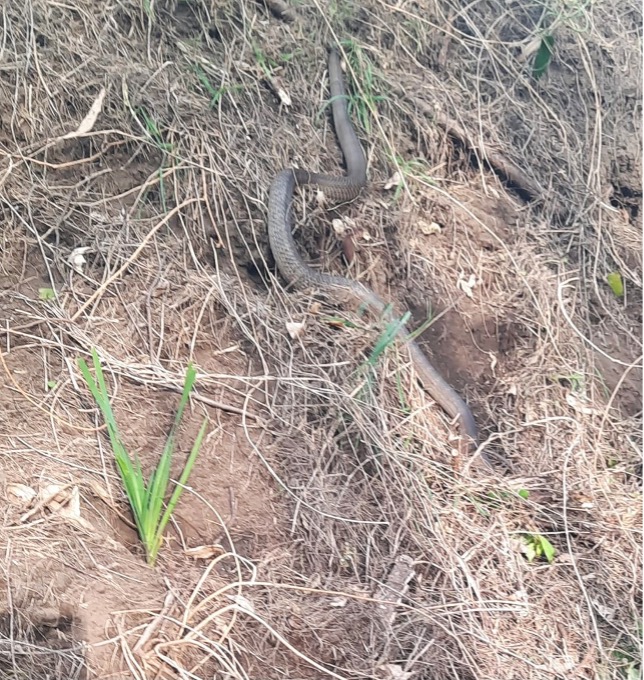
This image is courtesy of the Vacy group. An Eastern brown snake’s (Pseudonaja textilis) habitat was disturbed while carrying out revegetation at the riparian site. Luckily, no one was hurt and the snake made its way to safety.
Some interesting facts:
Eastern Brown Snakes are encountered at the highest rate in spring, followed by autumn and summer/winter. They can be found active on mild winter days and have been observed basking in air temperatures as low as 14º C.
Source: https://australian.museum/learn/animals/reptiles/eastern-brown-snake/
Being an alert, nervous species they often react defensively if surprised or cornered, putting on a fierce display and striking with little hesitation. However, if approached over a distance, they will usually choose to flee or else remain stationary, hoping to avoid detection. The approach distance tolerated before the snake flees is temperature dependent – snakes with a body temperature of < 24º C allow significantly closer approach than do snakes with a body temperature > 24º C.
“DO NOT STAMP YOUR FEET WHEN A SNAKE CROSSES YOUR PATH, this will provoke the snake to bite, stay perfectly still and let the snake move along.
Snakes’ eyesight is not the best of their senses, they primarily work on smell and vibration. So if you stomp your feet in striking range, the snake will feel threatened by the large vibration and will strike the large blurry object; your foot/boot.
However, you should make extra noise as you travel on foot though grass and snake areas, as this will give the snake pre-warning that something large is in its area and it will move away and try to avoid you.”

